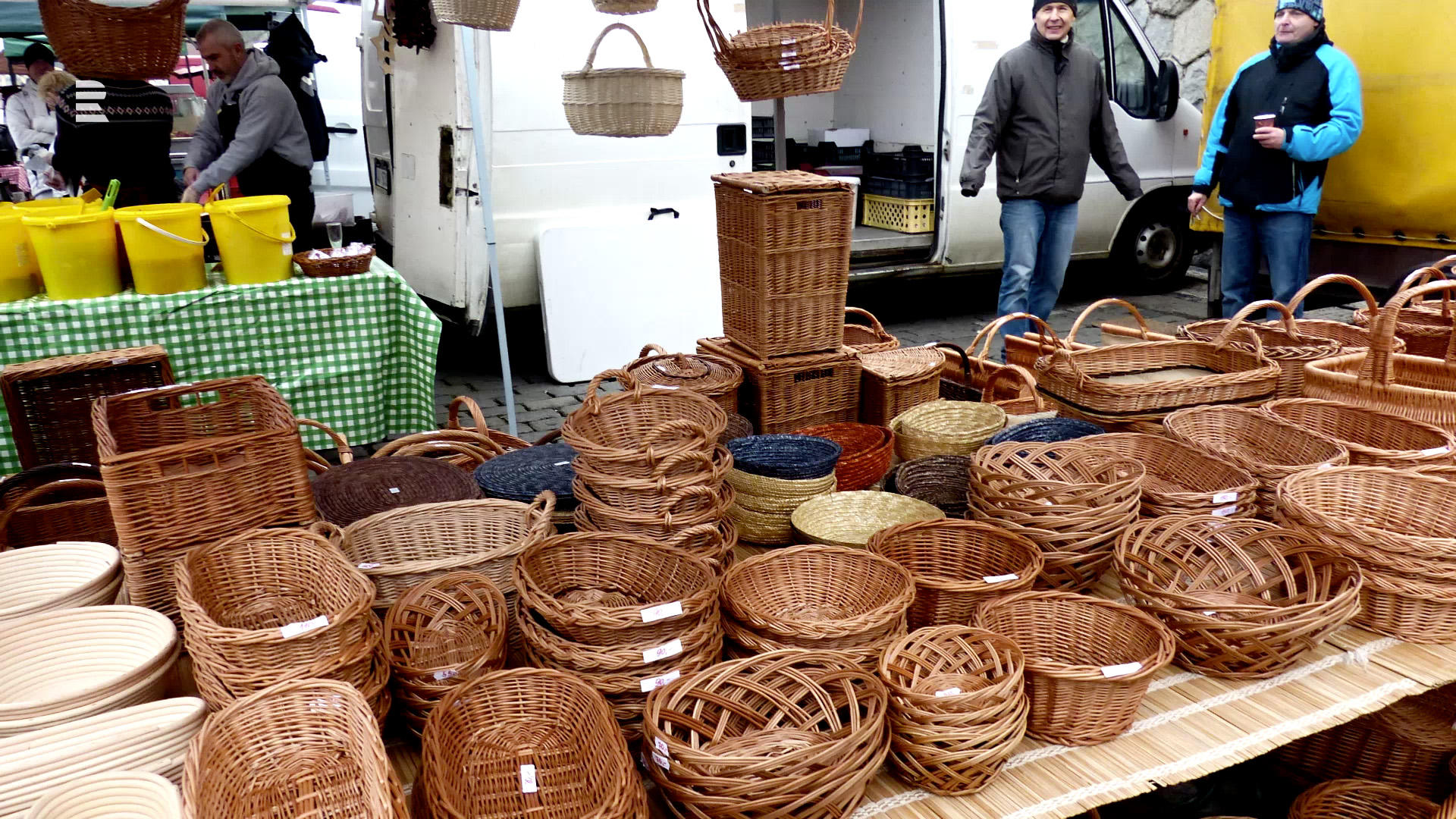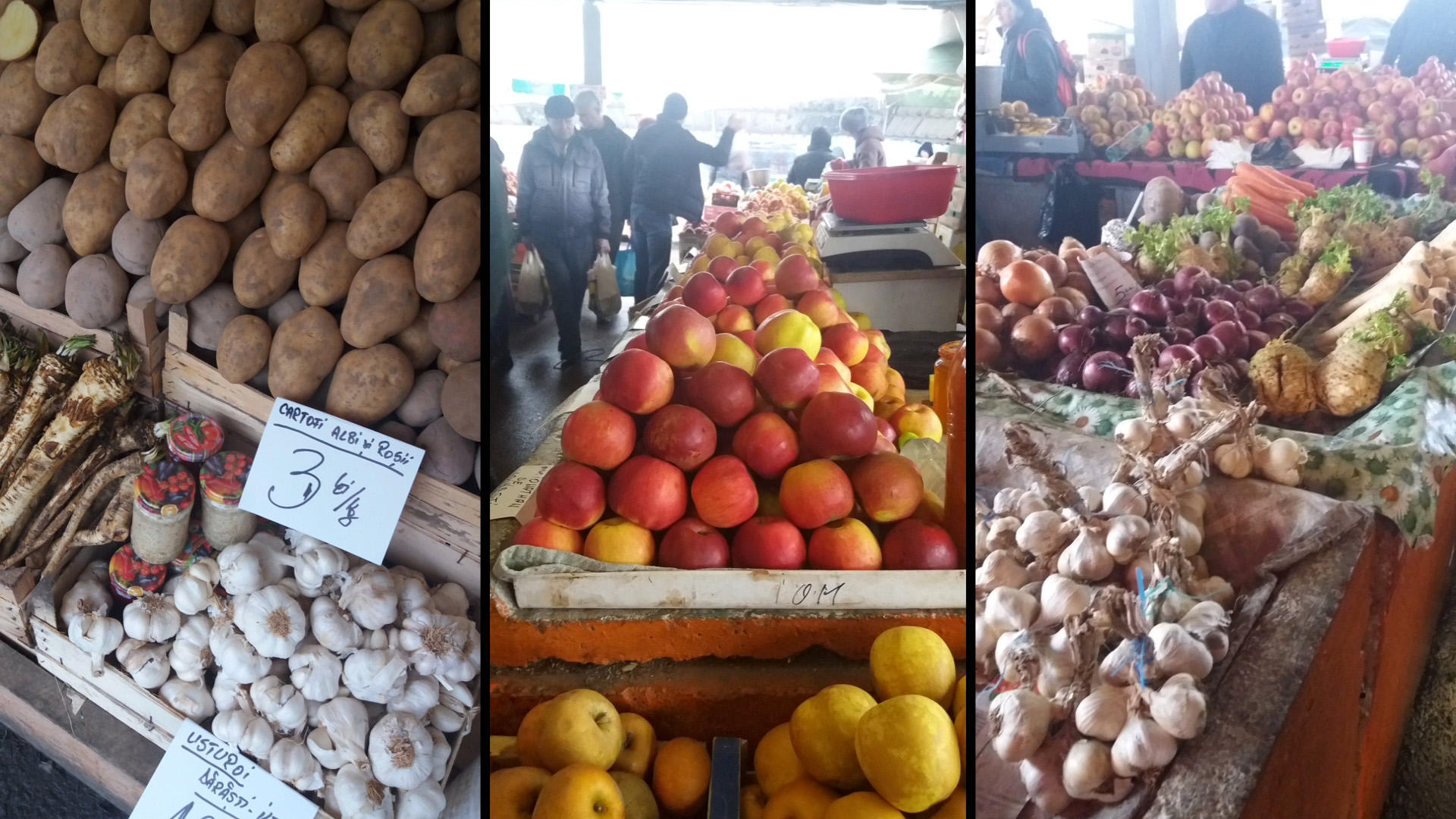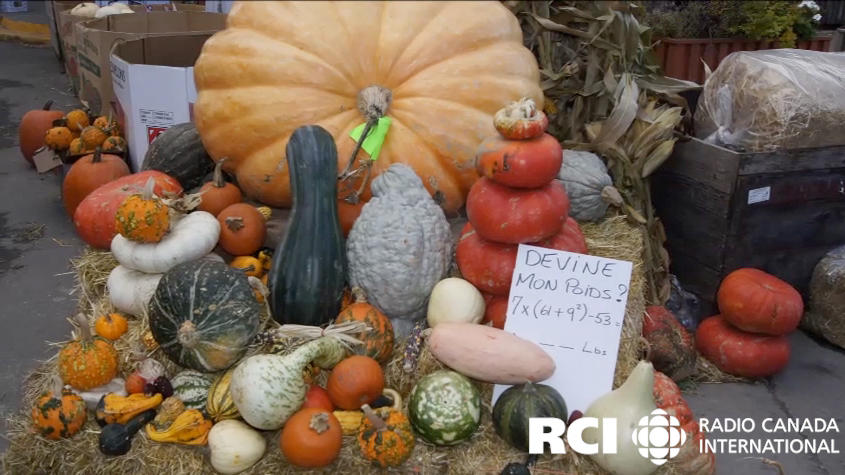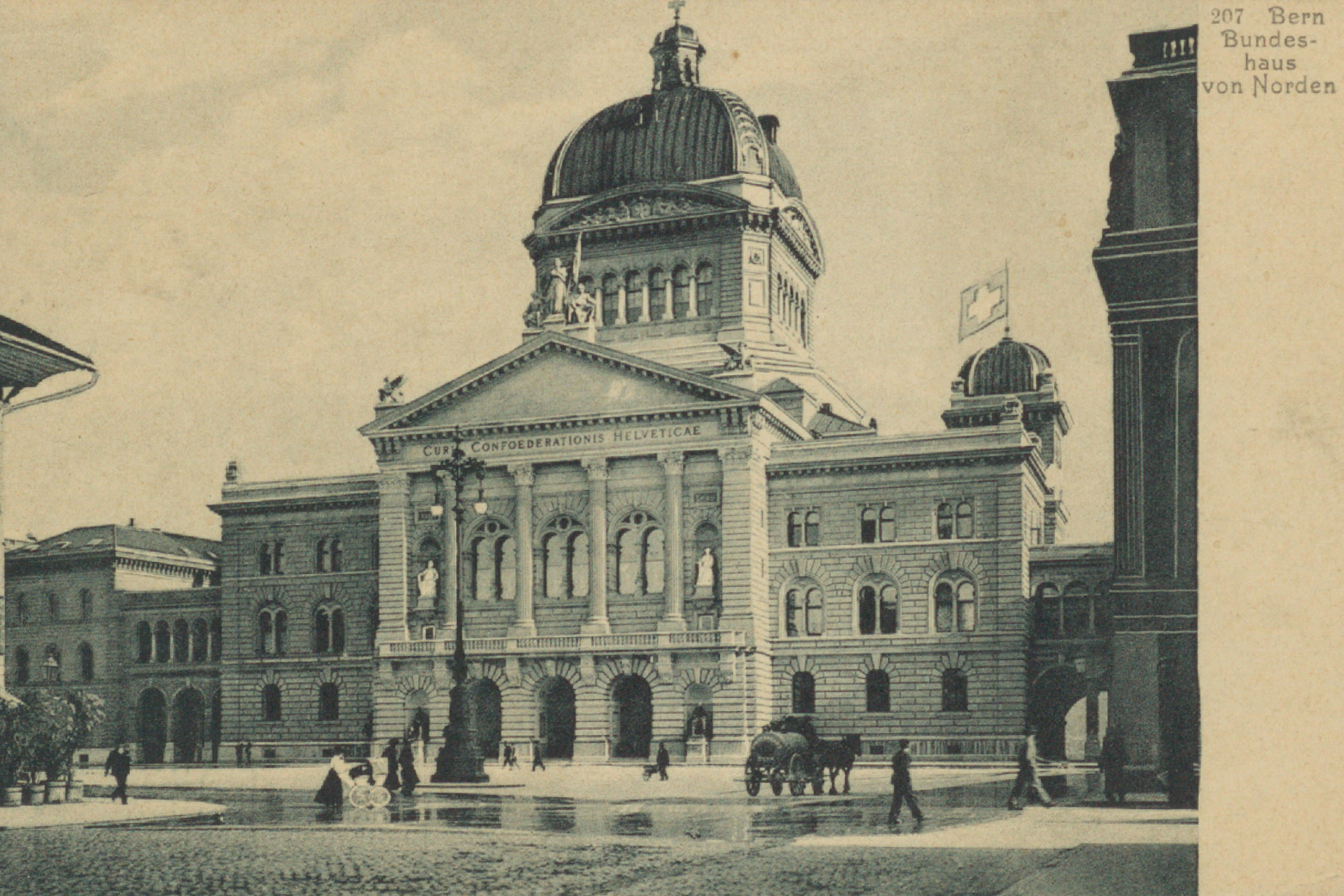When parliament square becomes a market
The big square in front of parliament in Bern turns twice a week into a market. There you can find everything: Sauerkraut from Gurbetal, Vacherin cheese from Freibourg, bread from wood-fired ovens and local ham. Sometimes a government member even comes to buy an apple.
The Bundesplatz in the Swiss federal capital is an important meeting point at the edge of Bern Old Town, which is listed as a UNESCO World Heritage siteExternal link. It is the site of epic celebrations, such as when the Bernese football club BSC Young Boys became Swiss champion, political demonstrations and state receptions with a guard of honour.
For over 130 years, a large weekly marketExternal link has been held here every Tuesday and Saturday morning, attracting hundreds of visitors depending on the weather and season.
As well as the locals, regular customers also include many parliamentarians. From time to time even a Federal Councillor comes by in person to buy an apple for their break. And of course the backdrop attracts tourists from all over the world.
“Hello, how can I help you?”
In the age of online shopping, customers appreciate personal contact with the producers, and they often stay for a chat about God and the world. In summer there are as many as 41 producers selling their produce — from the big vegetable stall with four employed saleswomen to the Italian, who sells his Mediterranean delicacies on a simple stand under a parasol or a plastic tarpaulin.
One of the sellers is farmer Walter Stettler, who runs a farm with his wife and son nine kilometres outside the city. They grow fruit and keep cattle, sheep and horses.
The family lives exclusively from direct sales at weekly markets and in their farm shop. On a sunny Saturday they can sell up to 700 kg of apples on the Bundesplatz. In addition to the weather, payday is a decisive factor in whether a market day is good or bad. “If customers already have their pay in the bank, they buy a lot more and pay with large notes instead of small change,” says Stettler.
Project ‘The Sounds of…’
swissinfo.ch and its partners have collaborated to bring you soundscapes and images of similar places in each of our countries. The videos from Radio Canada InternationalExternal link, Radio PolandExternal link, Radio PrahaExternal link and Radio Romania InternationalExternal link provide a chance to tour the train stations of their countries.

More
Hala Mirowska, Warsaw
Hala Mirowska is one of the largest markets in Warsaw. It was constructed at the beginning of the 20th century. The building was bombed during the Warsaw Uprising in 1944. Rebuilt in the 1950s, it was restored to its original function as a market and is now a place where different generations meet. It is also a popular spot for tourists, who come here to look for traditional and regional Polish products, like sauerkraut, beetroot, sour cream, mushrooms, honey, fresh herbs, smoked cheese and sausage. The market consists also of a chic modern hall, but the real charm can be found only in the old area of the market.

More
Rašin-Kai, Prague
A short distance from the city centre, the embankment Rašínovo nábřeží in Prague is filled with lovers of fresh, local products on Saturdays. The atmosphere of farmers’ markets, with their tastings, seating and often music, attracts locals and tourists. In recent years the number of markets has risen steadily and there are now more than 20 each week in the Czech capital alone. This signifies a revival of sales of fresh foods from regional producers, which was forcibly interrupted during the Communist period.

More
Matache Măcelaru, Bucharest
The “Matache Măcelaru” market is within walking distance of the main train station in Bucharest, at the crossroads of Calea Griviței and Calea Buzești, the favourite place of tradespeople in the late 19th Century. One of them was butcher Loloescu Matache. He started doing business after the Romanian War of Independence, around 1879, when he started building the famous Matache hall, which has recently been demolished. Back then, the market was located on the outskirts of Bucharest. In 1948, it became the “Ilie Pintilie” state-owned market, named after a former Romanian communist leader. The main market in the “Drumul Taberei” district of Bucharest also bore for a long time the name of another communist politician, Alexandru Moghioroş. But soon after the fall of Communism, it was renamed after the famous Romanian conductor Sergiu Celibidache, and is still the market of choice for local people.

More
Jean Talon Market, Canada
The Jean Talon Market, founded in Montreal in 1933 and named in honour of the first governor of New France, is one of the largest markets in North America. It is open during the four seasons. Its visitors – more than 2.5 million in 2018, including tourists – purchase fruits, vegetables, produce, herbs and flowers from local farmers whose farms are generally within 50 km from the market.
Located in the district of Little Italy, this multicultural market is famous for the wealth of organic produce and regional products of the province of Quebec it offers to its visitors.
These “scenes of life” were captured between the end of summer and Christmas 2018.
Julia Crawford










You can find an overview of ongoing debates with our journalists here . Please join us!
If you want to start a conversation about a topic raised in this article or want to report factual errors, email us at english@swissinfo.ch.